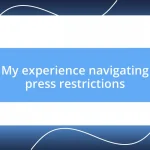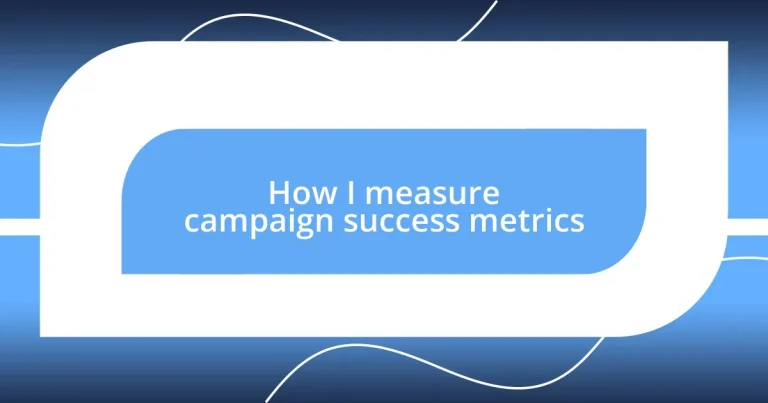Key takeaways:
- Understanding campaign success metrics requires recognizing that different metrics (like CTR vs. conversions) tell different stories, emphasizing the need to focus on those that align with campaign goals.
- Defining clear, measurable, achievable, relevant, and time-bound (SMART) goals is crucial for guiding campaigns and assessing progress effectively.
- Tracking essential KPIs—like conversion rate, ROI, and CAC—provides valuable insights that are more indicative of campaign success than vanity metrics.
- Adjusting marketing strategies based on analytical insights helps refine campaigns, increases relevance, and ultimately leads to better outcomes.
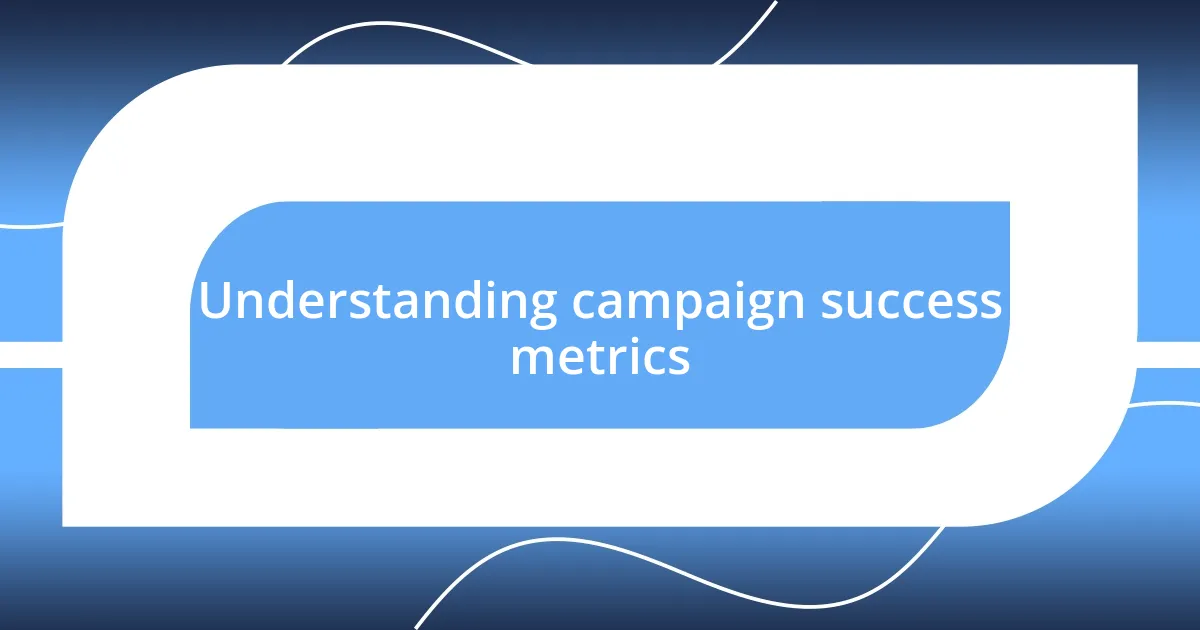
Understanding campaign success metrics
Campaign success metrics are crucial for assessing the effectiveness of our efforts. I remember when I first started analyzing these metrics; it felt overwhelming. But breaking down the data into digestible parts made all the difference.
One important aspect of understanding these metrics is recognizing that not all numbers tell the same story. For instance, a high click-through rate (CTR) might seem impressive, but if it doesn’t translate into conversions, is it really a success? This realization hit home during a campaign where we celebrated a great CTR only to find ourselves disappointed in sales.
Emotionally, it can be tough when the numbers don’t align with our efforts and aspirations. I often reflect on those moments, asking myself what went wrong. Was it the messaging? The targeting? Understanding these aspects not only improves our campaigns but also shapes our approach to future strategies. Each metric can be a lesson, guiding us to better results and more profound engagement with our audience.
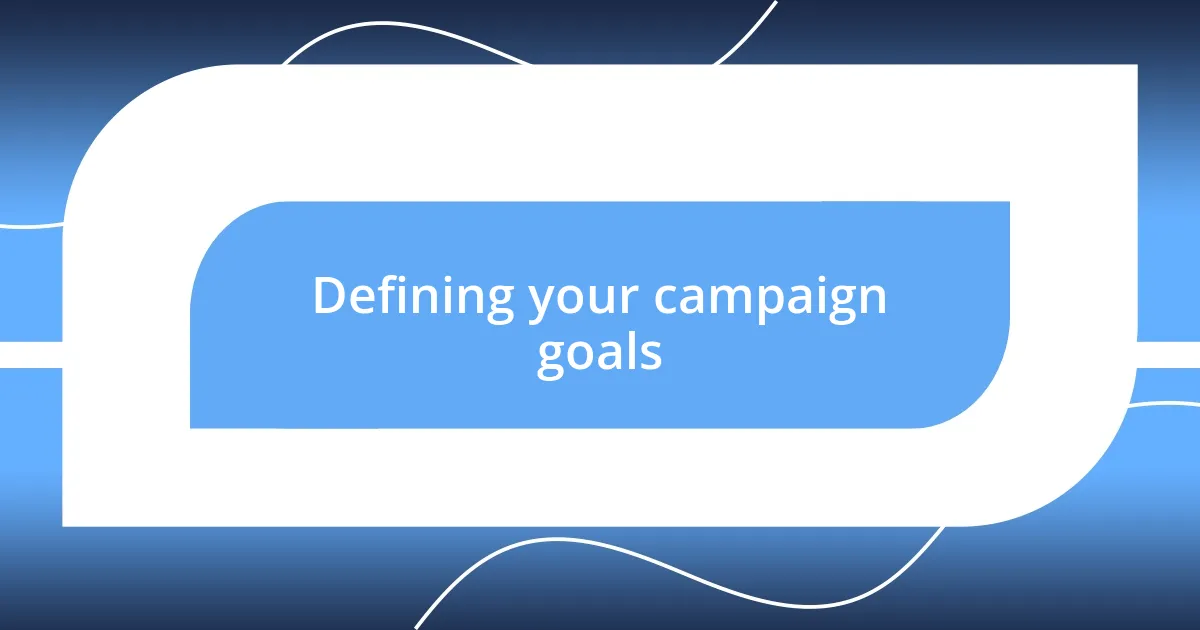
Defining your campaign goals
Defining your campaign goals is one of the most crucial steps in measuring success. I’ve learned that clarity is everything. The first campaign I ran without clearly defined goals felt like sailing a ship without a compass. We were busy with tasks but had no real direction, and the results reflected that chaos. When you set clear, measurable goals, it transforms your entire approach. You can assess what needs adjusting along the way, and it ultimately guides you to your desired outcomes.
Consider these essential elements when defining your campaign goals:
- Specificity: Clearly outline what you want to achieve. Instead of “increase sales,” aim for “increase online sales by 20%.”
- Measurable: Ensure your goals can be quantified. This could be through clicks, conversions, or leads.
- Achievable: Set realistic goals based on your resources and market conditions.
- Relevant: Your goals should align with your overall business objectives.
- Time-bound: Establish a timeline for your goals. A deadline adds urgency and helps maintain focus.
Creating goals this way not only simplifies measurement but also maintains motivation throughout your campaign. It’s empowering to see the progress, and those small wins along the way keep your team engaged and inspired!
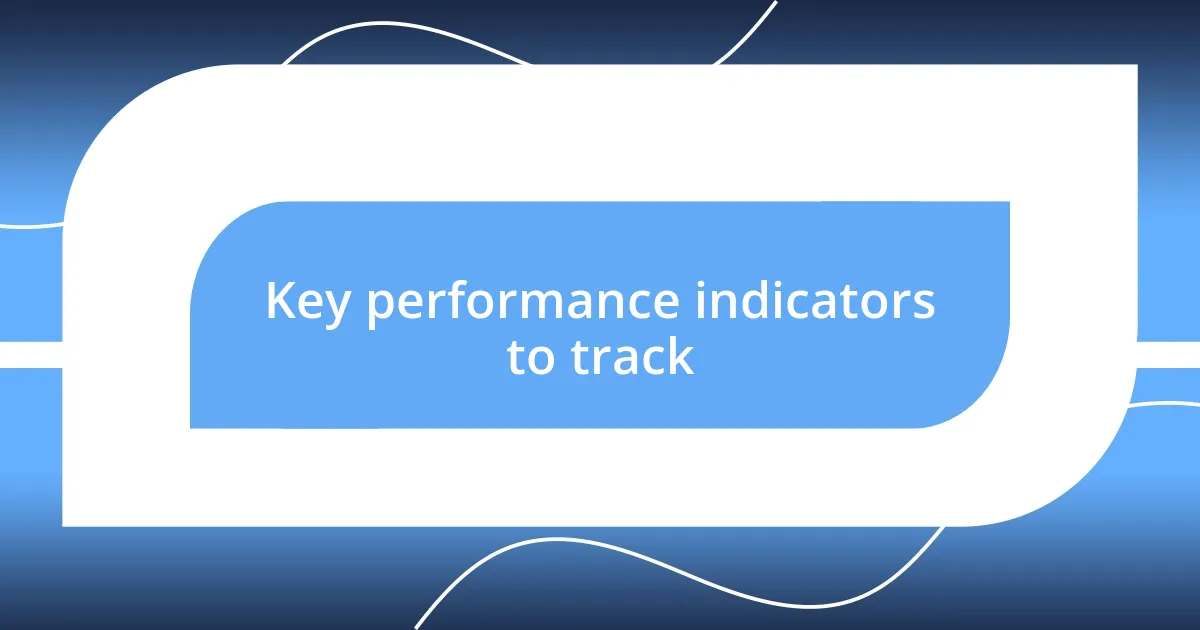
Key performance indicators to track
Tracking the right key performance indicators (KPIs) is vital for understanding your campaign’s success. When I first started out, I distinctly remember focusing too much on vanity metrics—like the total number of likes on social media—only to realize these numbers didn’t translate into real-world impact. Now, I prioritize KPIs that directly relate to my campaign goals, such as conversion rate, return on investment (ROI), and customer acquisition cost (CAC). These metrics provide clearer insights, helping me gauge what’s working and what isn’t.
A particular experience stands out in my memory. In a recent email marketing campaign, I monitored open rates and click rates, but I also made sure to track the resulting sales. The open rate was high, but my heart sank when those clicks didn’t convert into revenue. This taught me that while click rate is essential, it’s the conversion rate that ultimately reflects my campaign’s effectiveness. It reminded me that successful campaigns require consistent evaluation of multiple KPIs to paint a complete picture.
To simplify, I’ve developed a comparison table that showcases my go-to KPIs for various campaign types. This helps me align my efforts, set expectations, and make informed decisions as my campaigns progress. Here’s what I focus on:
| KPI | Description |
|---|---|
| Conversion Rate | The percentage of users who take a desired action, indicating effectiveness. |
| Return on Investment (ROI) | Calculates the profit made relative to campaign costs, vital for assessing overall success. |
| Customer Acquisition Cost (CAC) | The cost of acquiring a new customer, helping determine spending efficiency. |
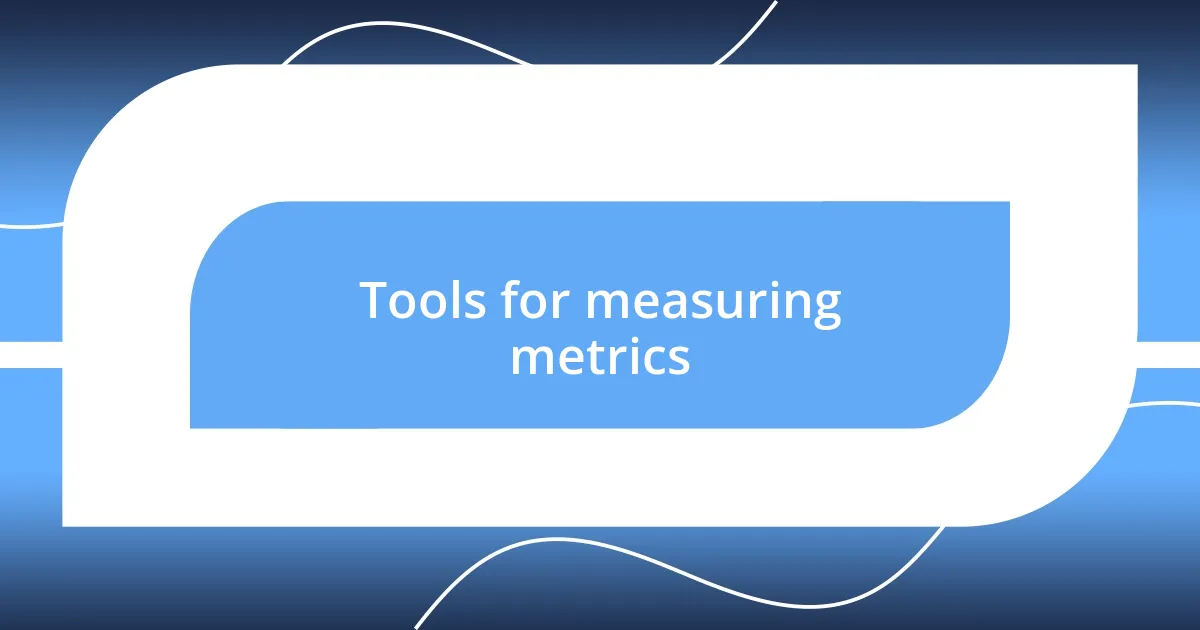
Tools for measuring metrics
There are countless tools available to measure campaign metrics, and I’ve tried quite a few to find the ones that work best for me. Google Analytics is a staple—its depth of data can feel overwhelming at times, but once you grasp its capabilities, it’s like having a treasure map to your campaign’s performance. I remember when I first dove into using it; the insights on user behavior and traffic sources unlocked a whole new level of understanding for me.
Another tool I swear by is HubSpot. It not only tracks metrics but also integrates seamlessly with my marketing efforts. This connectivity becomes particularly evident when I analyze email marketing campaigns. I can see which emails drive the most traffic and how many of those visitors convert. Have you ever considered how much easier analysis can be when all your data is consolidated? It saved me countless hours of manual tracking, allowing me to focus on strategy.
Finally, I can’t overlook the value of social media analytics tools like Sprout Social. These platforms provide a comprehensive view of engagement metrics across various channels. I recall a specific campaign where I noticed a significant uptick in audience engagement on Instagram, leading me to rethink my content strategy. Isn’t it fascinating how a simple insight can pivot the direction of your efforts? By leveraging these tools, I’ve been able to adapt and optimize in real-time, steering my campaigns toward success.
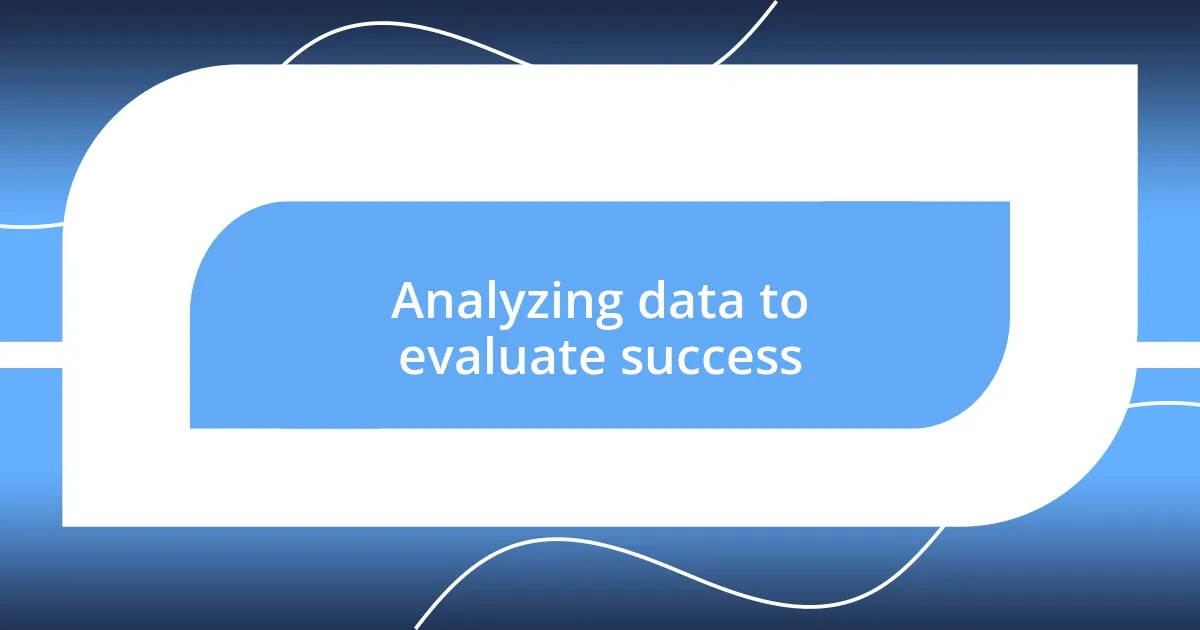
Analyzing data to evaluate success
Analyzing data to evaluate success involves diving deep into the numbers to uncover trends and actionable insights. I often find myself poring over reports late at night, driven by curiosity about what makes my campaigns tick. For example, during a recent product launch, I noticed a surprising spike in traffic from a specific referral source. It encouraged me to dig deeper and experiment with targeted content tailored to that audience, highlighting how crucial it is to stay attentive to data shifts.
In my experience, leveraging A/B testing has been a game-changer. I remember running two different versions of an ad to see which resonated more with my audience. Tracking user interactions in real-time made it clear that one version had a significantly higher engagement rate. This testing not only refined my approach but also instilled a sense of satisfaction – it felt like conducting a little experiment, and I genuinely enjoyed seeing the results firsthand. Have you ever had that “aha” moment when the data finally clicked?
Moreover, I can’t stress enough the importance of regularly revisiting and adjusting your evaluation criteria. Sometimes, I’d find myself fixated on a particular metric, only to realize it no longer aligned with the current goals of my campaigns. I vividly recall a phase when I overvalued engagement metrics without considering actual sales outcomes. It was a wake-up call, prompting me to broaden my perspective and embrace a more comprehensive approach to success measurement. Embracing this fluidity helps in crafting strategies that align better with evolving objectives, don’t you think?
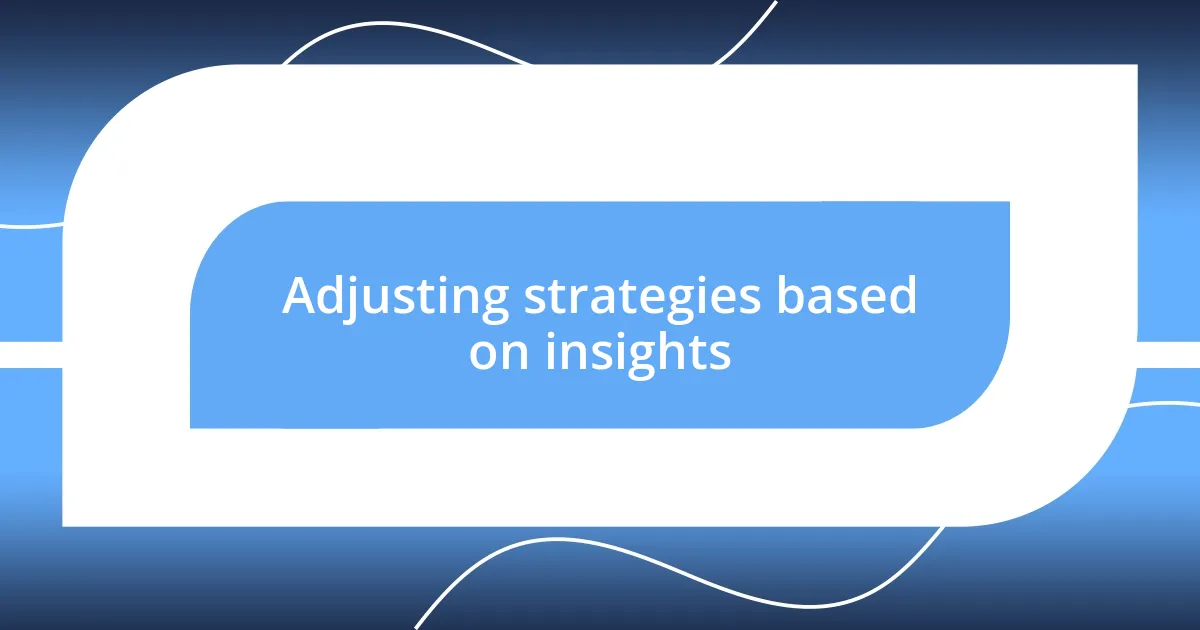
Adjusting strategies based on insights
When I gather insights from my campaign metrics, the next step is all about recalibrating my strategies. I recall a time when my content was underperforming; after closely examining the engagement statistics, I realized my audience craved more interactive posts. It was a profound moment for me, shifting my entire content approach and leading to a significant boost in engagement. Isn’t it empowering to think that simply tweaking your strategy based on insights can create such a ripple effect?
Then comes the challenge of interpretation. I remember analyzing engagement data after a particular campaign, only to discover that conversions weren’t quite matching up. It forced me to dig deeper, exploring not just the “what” but the “why.” Did my call-to-action resonate? Was my landing page compelling enough? This dynamic process of adjusting strategies based on insights has become akin to an art form for me, where each brush stroke can lead to a masterpiece or a revision. Have you ever felt that creativity flow when adapting your marketing tactics?
I’ve also learned to embrace flexibility in my strategic planning. Some of my most successful campaigns emerged from mid-course corrections, driven by fresh insights. There was a pivotal instance when I noticed an unexpected audience segment showing interest. Rather than ignoring this data, I pivoted my messaging to target that group specifically, which opened up new avenues I hadn’t considered before. It taught me that the willingness to adjust strategies isn’t just beneficial—it’s essential for staying relevant and achieving goals. How often are we truly ready to evolve as the data tells us to?
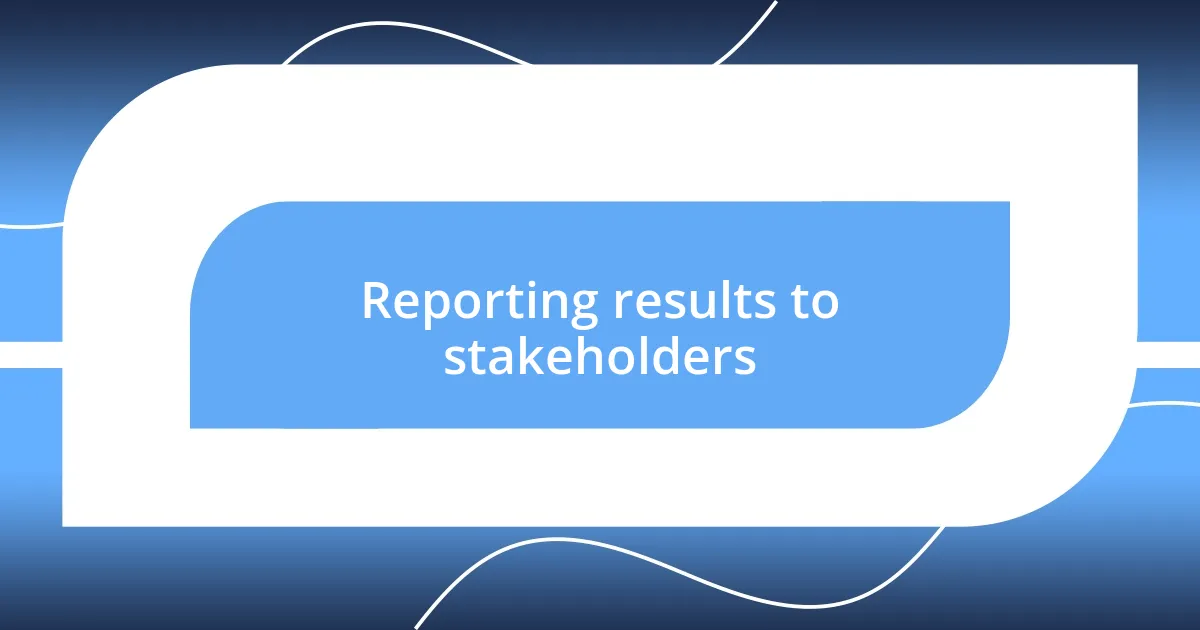
Reporting results to stakeholders
Reporting results to stakeholders is one of the most vital aspects of my work. When I compile my findings, I aim to present not just the numbers but also the stories behind them. I recall a presentation where I showcased a campaign’s impact by blending data with visuals, capturing stakeholders’ attention and sparking genuine interest. It was a reminder of how storytelling through metrics can bridge the gap between raw data and its real-world implications.
I’ve learned that clarity is key when communicating results. During quarterly reviews, I often strip down complex metrics into digestible insights, focusing on what really matters. For instance, rather than inundating stakeholders with a barrage of statistics, I emphasize how specific changes in our strategy led to a marked increase in customer engagement. Isn’t it fascinating how a concise narrative fosters better understanding and retention of information?
Moreover, seeking feedback during these presentations has become a best practice for me. After all, stakeholder buy-in is crucial for future campaigns. There was an occasion when I didn’t just present numbers but actively asked for opinions, leading to an insightful discussion that shaped our next steps. This approach not only values their input but also strengthens our teamwork, making them feel integral to the campaign’s success. How often do we take the time to listen to those who are impacted by our work? It’s a powerful way to build collaboration and trust.











